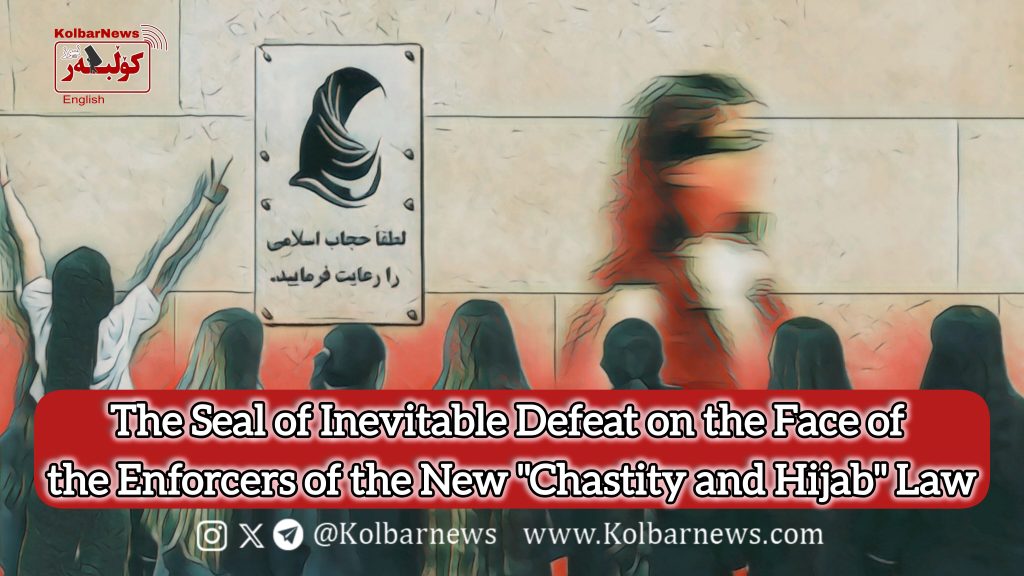
On November 30, the Iranian parliament passed the “Family Protection Bill through Promoting the Culture of Chastity and Hijab,” known as the Hijab Bill, and published it on Sunday, December first. This law consists of 74 articles divided into five chapters and was circulated among various regime institutions several times before its approval. The security forces and judiciary frantically and brutally attempted to implement parts of this bill even before it officially became law. The lengthy chapters and articles outline public duties for executive agencies, specific responsibilities for certain organizations, general obligations, social responsibilities, crimes, and violations.
Various organizations, including the Ministry of Culture and Islamic Guidance, state media, the Ministry of Education, the Ministry of Health, municipalities, the Ministry of Science, the Ministry of Sports, and other institutions, are tasked with enforcing this law. For example, the Ministry of Interior is required to prepare a “social profile” based on regions and geographical diversity, considering cultural differences to strengthen the “Islamic family-oriented lifestyle” and the “culture of chastity and hijab aligned with local customs.” The Ministry of Roads is tasked with designing buildings so that the privacy of residential units is not visible to non family members. The Ministry of Communications must accelerate the development of the national information network. Meanwhile, security forces are mandated to establish and enhance intelligent systems to identify individuals violating the law using tools like stationary and mobile cameras and artificial intelligence. Additionally, the police command is permitted to recruit trusted individuals those who are married, have undergone necessary training, and adhere to Islam and the Constitution of the Islamic Republic of Iran to identify and report violations under this law.
Economic penalties of up to 165 million tomans are also stipulated in the financial offenses section of the law. It is specified that non-payment of finalized fines will result in the suspension of services such as issuing or renewing passports, registering or changing vehicle plates, granting travel permits, releasing legally confiscated vehicles, and issuing or renewing driving licenses. Men and business owners are also warned that they will be fined if they cooperate with so called offenders.
The parliament will not rely solely on police, the judiciary, and other repression forces to enforce the hijab law. “Enforcers of Good and Forbidders of Evil” will also play a role in identifying so called offenders. These enforcers may include Iranian citizens or foreigners with legal residency. Both groups must meet certain specified criteria. Citizens are also futilely urged to spy on one another for the police.
Speaker of the Parliament, Mohammad Bagher Ghalibaf, announced that the “Hijab Law” will be delivered to the government on December 13th. However, while brave women have already rendered this law meaningless in the streets, opposition to the law is also openly voiced in domestic media. The following examples illustrate the growing wave of dissent:
Azar Mansouri wrote on X (formerly Twitter): “This law intensifies an approach that has repeatedly failed in practice. Do you remember what kind of clothing dear Mahsa was wearing before her arrest? Compare her attire to the average dress of Iranian women today to see the magnitude of this failure more clearly.”
Kambiz Norouzi, a legal expert, stated in an interview with Entekhab news site that this law is “entirely political” and essentially unenforceable because it deeply conflicts with our social realities. He added that even partial implementation of the law could lead to severe social crises, emphasizing that “this law reflects the views of a small political faction and is doomed to fail.”
Ali Mojtahedzadeh, a lawyer, posted on X: “As a legal expert, after reading the Hijab and Chastity Law, I can only express shame and embarrassment toward my noble and oppressed compatriots.”
The Hijab Law reveals chaos at the highest levels of the regime. Yet this chaos does not mean that repressive measures are forgotten. In reality, this law is designed to strengthen repressive systems at a time when the regime’s officials and supporters are losing sleep over the persistent strength of the “Zhina Revolution.” Workers, courageous women, and all freedom-seekers will turn the fears of the ruling elite and their allies into reality.

